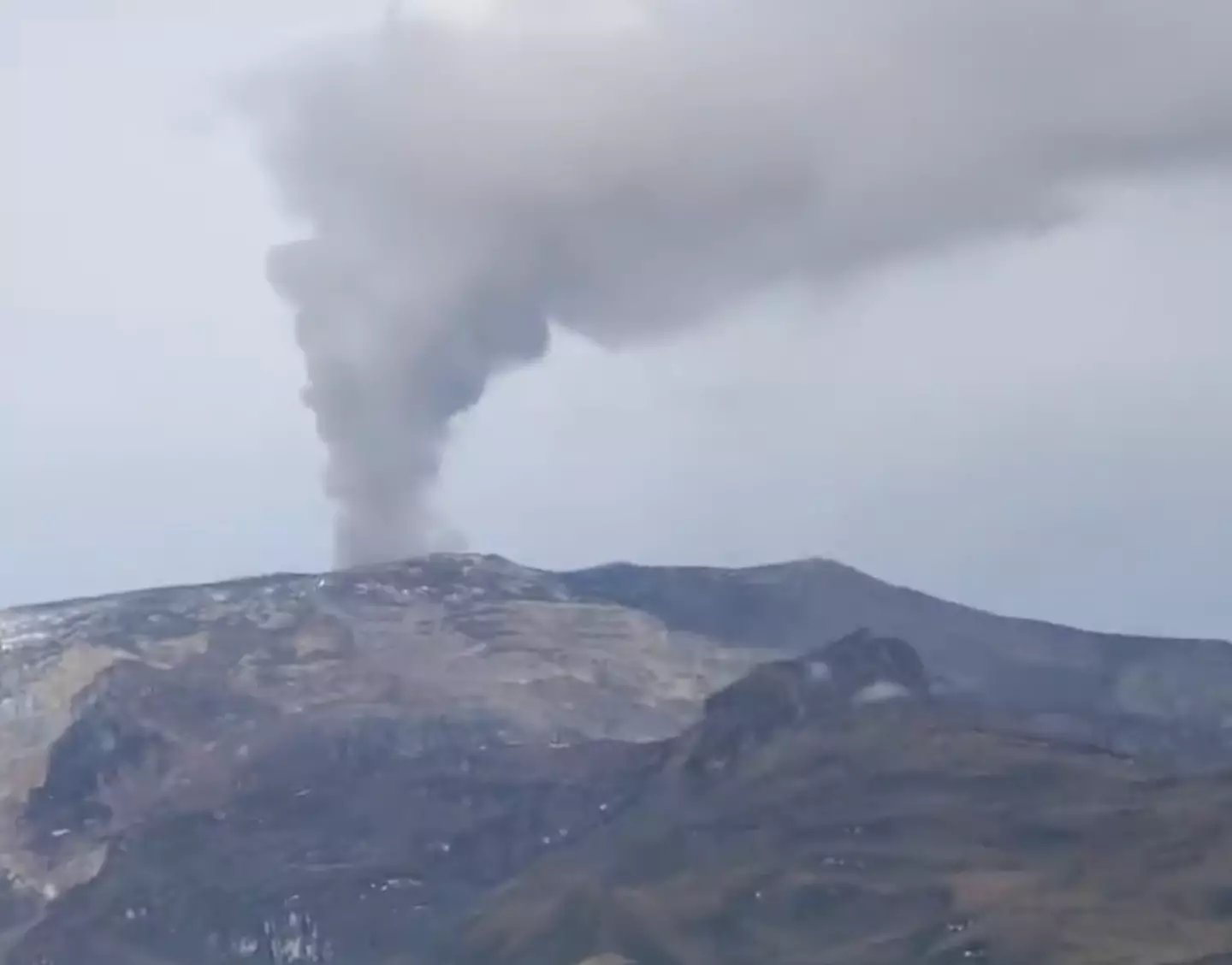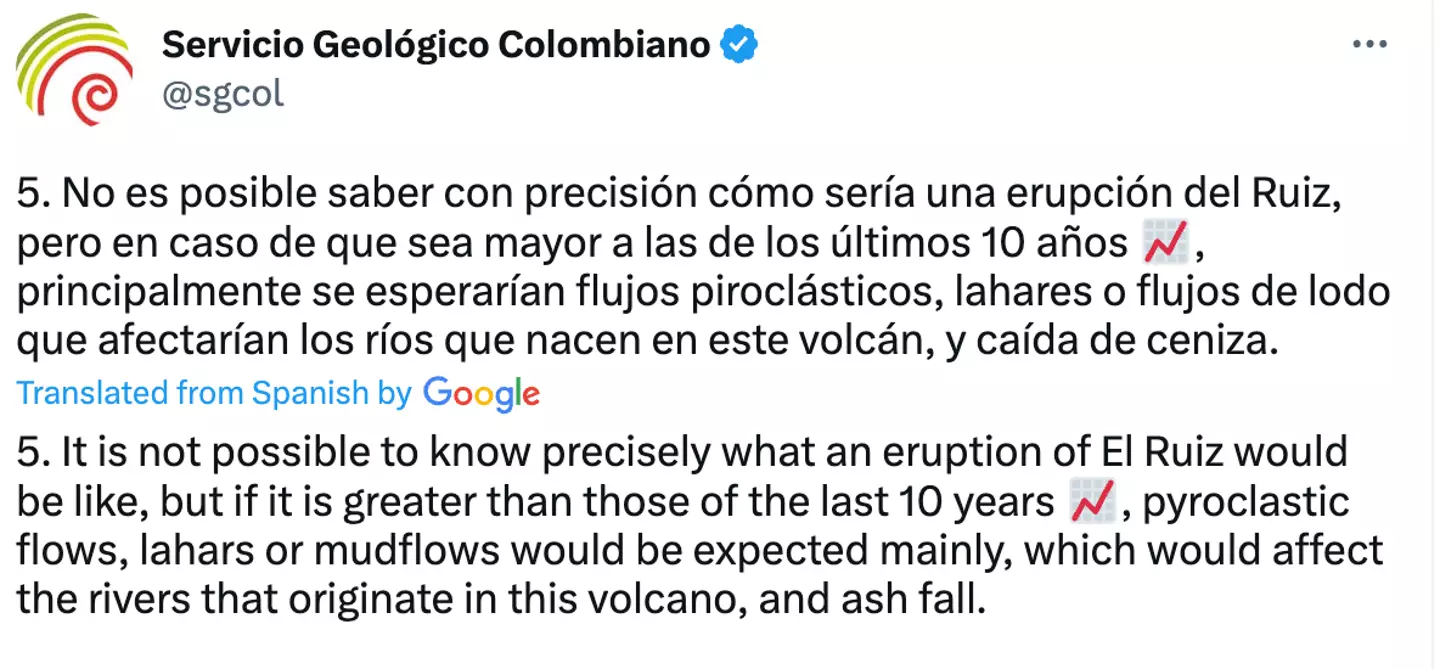
Authorities in Colombia have confirmed an ongoing increase in activity at a volcano that was responsible for killing 25,000 people just a few decades ago.
The Nevado del Ruiz volcano, located about about 129 km west of the capital city Bogotá, has been home to minor eruptions for the past 10 years, but on 24 March, Colombia's Geological Service (SGC) noticed that its seismic activity had started to increase.
In 1985, the volcano caused Colombia's deadliest natural disaster when heat from an eruption melted snow on its peak, resulting in a mudslide which almost buried the entire town of Armero, where 30,000 people lived.

Since late last month, geologists have registered thousands of daily tremors at the volcano; movements which prompted the SGC to raise the alert level for the volcano from yellow to orange, signalling that an eruption bigger than any of those that have occurred in the last decade could take place imminently.
Advert
In a bid to prevent fatalities from any upcoming eruption, approximately 40 families in the area were evacuated and the nearby Los Nevados natural park was closed to tourists.
The SGC provided its latest update on the activity today (10 April), stating that the seismic activity is still ongoing in the southwestern sector of the volcano.
The activity is believed to be at a depth of between two and four kilometres, and between 1.7 and six kilometres from the crater.

The translated update continued: "Since this morning this seismicity has increased and is associated with the emission of
Advert
continuous ash, confirmed through the cameras used in the monitoring and by reports of inhabitants of the La Cabaña village sector."
The SGC also noted that while activity associated with rock fracturing has decreased in the last few days, 'there are other parameters that show that the activity of the volcano Nevado del Ruiz is still very unstable'.
"In the event of an acceleration of processes that suggest an imminent eruption or the eruption itself, the [threat level] will turn red," the SGC's update said.
The raise to an orange threat level comes for the first time since 2012, when it remained orange for more than a month before increasing to red for two days.
Advert
However, in spite of the warning, no major eruption occurred.
The SGC has urged the local community to 'remain calm' amid the current events, and to follow the instructions of local authorities when it comes to activity at the volcano.
Topics: Environment, World News